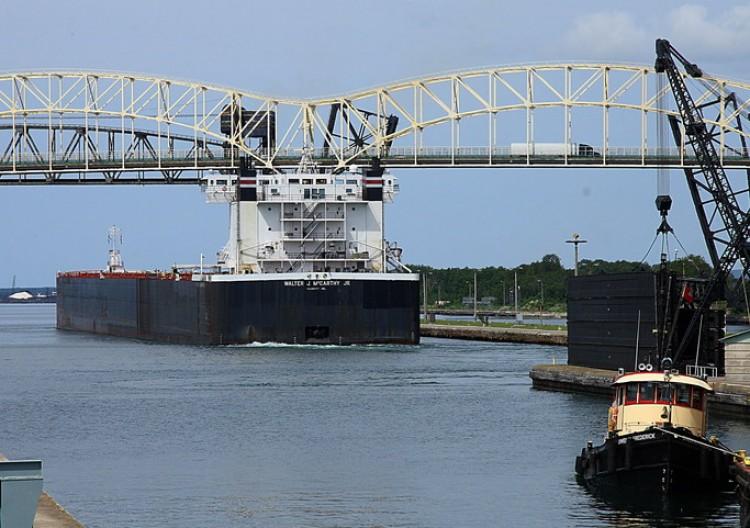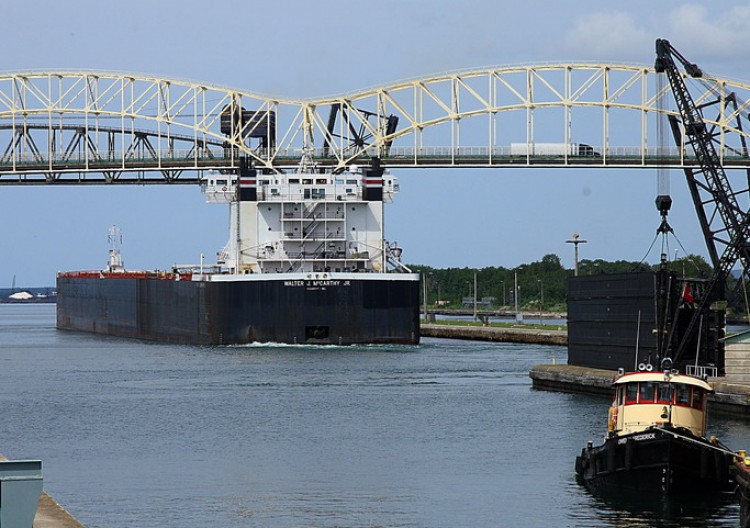A plan by New York State to impose tough regulations on ballast waters to protect the Great Lakes from invasive species should go ahead despite a report finding that the proposed rules could have a negative economic impact, says the Council of Canadians.
The council, a prominent citizens’ group, says it is imperative to curb further damage to the Great Lakes by alien species introduced by ballast waters.
New York’s proposed regulations, which if passed would take effect in 2013, are aimed at preventing invasive species from entering the Great Lakes through the St. Lawrence Seaway.
The regulations will require ships to carry out a ballast water exchange or a saltwater flush at a minimum of 50 nautical miles from shore in water that is at least 200 metres deep. Ships passing through New York State will also be required to install ballast water treatment systems.
Since the St. Lawrence Seaway was opened in 1959, over 185 alien species have entered the lakes, impacting both native species and commercial activity, the council says. Of these, 65 percent have been attributed to ballast water.
According to Ontario’s Ministry of Natural Resources, damage associated with the zebra mussel alone—a non-native species introduced to the Great Lakes via ballast water—has cost between $3 billion and $7.5 billion.
“We commend the state of New York for taking the lead on preventing invasive species from entering the Great Lakes,” says Maude Barlow, national chairperson for the Council of Canadians.
“The Great Lakes are under threat from a number of risks. We need strong leadership from governments that consider the impacts invasive species have on water protection, public health, local economies, the fishing industry, and local food supply.”
Standards Too Stringent
But a report released Oct. 18 by the marine industry noted that according to the U.S. Environmental Protection Agency, the technology does not exist to meet the water quality level stipulated by New York, and the proposed regulations could have a negative effect on economies both sides of the border.
“The regulations apply to vessels that call on New York ports and vessels that transit New York waters destined for ports in other states,” the report said, adding that the water quality standard proposed by New York is 100 times more stringent than international ballast water standards.
“If left unchanged, [the regulations] will cause economic harm when they come into effect, resulting in complete cessation of commercial maritime commerce in New York waters.”
The report said the Great Lakes-St. Lawrence Seaway navigation system supports over 225,000 jobs and generates billions of dollars in income and revenues annually in both the U.S. and Canada.
Some changes may be on the way, however. According to BuffaloNews.com, as a result of complaints from the shipping industry, there are indications from the Cuomo administration that amendments to the ballast water proposal may be in the works.
In addition, a bill currently moving through the House of Representatives aimed at exempting ballast water from the federal Clean Water Act would undermine the proposed regulations.
The Great Lakes represent one-fifth of the Earth’s surface fresh water, but the vitality of the ecosystem has been threatened by alien species that have wreaked havoc on native fish and plants. Other threats include toxic algae blooms that choke off oxygen and cause “dead zones.”
Emma Lui, water campaigner for the Council of Canadians, says that at a recent Great Lakes conference in Detroit, “participants stressed that ignoring threats to the Great Lakes such invasive species would deal a significant blow to both the U.S. and Canadian economy.”
The council is calling for the Great Lakes to be declared a commons, a public trust, and a protected bioregion, and wants a moratorium on all ocean-going vessel access to the lakes until a “fool-proof plan” is put in place to stop the influx of invasive species into the Great Lakes Basin.






